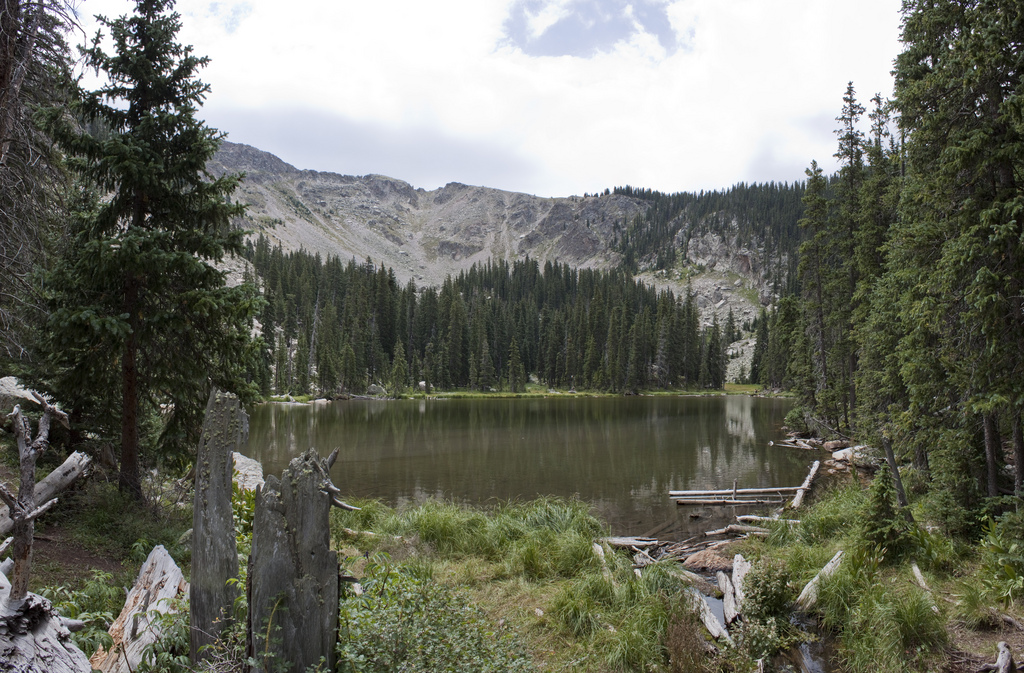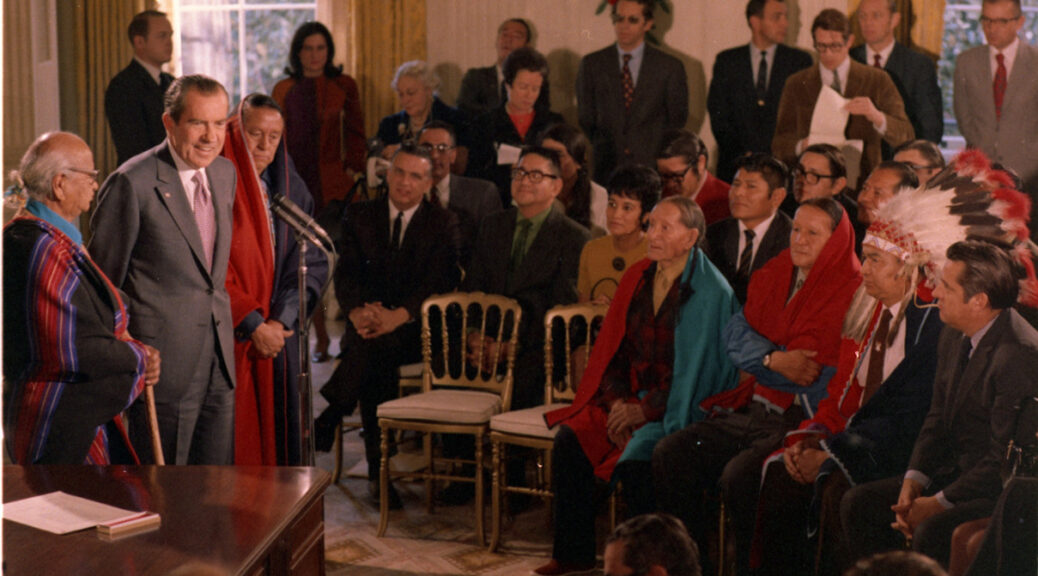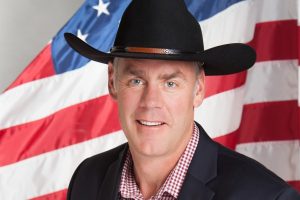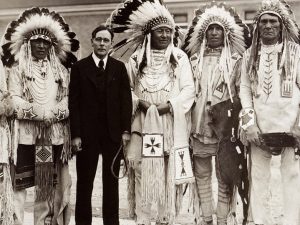Fifty years ago today President Richard M. Nixon returned the sacred Blue Lake to the people of Taos Pueblo. It was a significant act by a deeply flawed and criminal president that represented significant change in the conduct of the nation’s Indian policy.
Nixon joined a growing list of American leaders who opposed the post-World War II set of Indian policies known as “termination.”
Termination consisted of several parts, all directed towards ending the formal relationship between the United States and Indigenous nations. Immediately after the war, Congress established the Indian Claims Commission, a tribunal before which native peoples could bring their claims against the United States. With damages paid and remaining obligations quieted, the United State could say, “we are done. We have paid you. Get lost.” There was the relocation program, designed to encourage native peoples to leave their reservation homes for America’s urban centers where, presumably, they would assimilate into the American working class. And finally the Termination Acts themselves: specific pieces of legislation that formally terminated the relationship between a specific Native American tribe or group of tribes and the United States. The United States would interact with Indians thereafter as individuals, not members of Indigenous Nations. As the policy’s strongest proponent, Senator Arthur Watkins, wrote in the Annals of the American Academy of Political and Social Science, “Firm and constant consideration for those of Indian ancestry should lead us all to work diligently and carefully for the full realization of their national citizenship with all other Americans.” The abolition and erasure of Native American nationhood Watkins likened to the Emancipation Proclamation, a perverse misreading of reality.
Most historians would consider as part of termination the Pick-Sloan Missouri Basin Project. Dams built on the Missouri and its tributaries harnessed the hydroelectric power of the American West, but flooded millions of acres of Native American land.

Ensuring that the American economy had the juice it needed to keep humming along at a high enough rate to ensure full employment and avoid a slide back into depression came at Indians’ expense. And the Indian Adoption Project, a horrifying initiative described by the historian Margaret Jacobs, encouraged the adoption of Native American children by white families.
Native peoples opposed termination. That opposition, described in Native America, led President Eisenhower’s Secretary of the Interior Fred Seaton to declare in 1958 that “no Indian tribe or group should end its relationship with the Federal Government unless such tribe or group has clearly demonstrated–first, that it understands the plan under which such a program would go forward; and second, that the tribe or group affected concurs in and supports the plan proposed.”
That slowed termination, but did not stop it. The policies remained on the books. Then, in March of 1968, President Lyndon Baines Johnson proposed “a new goal for our Indian programs . . . that ends the old debate about ‘termination’ . . . and stresses ‘self-determination; a goal that erases old attitudes of paternalism and promotes partnership self-help.”
Johnson became the lamest of lame ducks three weeks later when he announced he would not seek reelection. The turmoil of 1968, and the disaster of the Vietnam War, kept Johnson from acting to effect his goals. Richard Nixon, who won the election in 1968, largely followed in Johnson’s footsteps. He appointed the Mohawk Louis Bruce to head the Bureau of Indian Affairs, the first Native American to hold that office since the Tonawanda Seneca Ely Parker had one so briefly a century before.
In May of 1970, Nixon delivered a special message to Congress on Indian Affairs. “The first Americans,” he said, “are the most deprived and most isolated minority group in our Nation.” This was the
heritage of centuries of injustice. from the time of their first contact with European settlers, the American Indians have been oppressed and brutalized, deprived of their ancestral lands and denied the opportunity to control their own destiny.
He continued:
But the story of the Indian in America is something more than the record of the white man’s frequent aggression, broken agreements, intermittent remorse and prolonged failure. It is a record also of endurance, of survival, of adaptation and creativity in the face of overwhelming obstacles. It is a record of enormous contributions to this country–to its art and culture, to its strength and spirit, to its sense of history and its sense of purpose.
The policy of termination was wrong, Nixon said. The government had treaty obligations it could not ignore. “Our government,” he continued, “has made significant commitments to the Indian people.” Native peoples, “for their part…have often surrendered claims to vast tracts of land and have accepted life on government reservations.”
Anyone who has studied Nixon in any detail notices the complexity of his character. It is unlikely that he embarked upon this significant policy shift out of the goodness of his heart. He faced a growing “Red Power” movement. Native peoples occupied Alcatraz Island, in one of the most dramatic protests of the era, while Nixon delivered his message to Congress. While his FBI investigated, infiltrated, and disrupted groups like American Indian Movement, resulting in death and ruined lives, the pressure did force him to move to accept that degree of self-determination that would “create the conditions for a new era in which the Indian future is determined by Indian acts and Indian decisions.”

By the time Nixon made this statement, the return of Blue Lake to Taos Pueblo had moved to the top of his agenda for American Indian affairs. A sacred site and the center of Taos religious life, Blue Lake became part of the Carson National Forest in 1906. The Forest Service opened the area to the American public soon after but also to timber interests. As early as 1350 AD, Pueblos from Taos had farmed lands watered by rivers flowing from Blue Lake. They depended upon Blue Lake, and did not feel that this precious resource could be shared. Taos Pueblo brought a suit before the Indian Claims Commission. New Mexico’s congressional delegation and representatives of the United States Forest Service challenged Taos Pueblo every step of the way.
In September of 1965 the Indian Claims Commission found that the United States had taken Blue Lake and the surrounding lands without just compensation. The Commissioners ordered that researchers determine the value of the lands Taos Pueblo had lost. The ruling pleased the Pueblos, but they did not want monetary damages. They sought the return of the land. Editorials appeared in newspapers around the United States supporting Taos Pueblo, and New Mexico Senator Clinton Anderson reluctantly introduced legislation in 1966 to arrange for the return of Blue Lake.

Other native nations sought the return of their lands. Some won their cases before the Indian Claims Commission and, like Taos Pueblo, refused to accept the monetary award because they wanted the land. Acceptance of the award would, under the law establishing the Indian Claims Commission, have quieted all their claims. Unlike other native peoples who continue to see their sacred sites destroyed and despoiled however, Taos Pueblo succeeded. The Taos and their numerous supporters argued on religious and moral grounds; the significance of the lands they had lost lay in their religious and spiritual importance. Their leaders pursued a vigorous campaign to inform the public about the importance of Blue Lake in their religious life and made their struggle a symbol of the historic mistreatment of native peoples.
In this sense, President Nixon was only too happy to sign the legislation returning Blue Lake to Taos Pueblo when it finally reached his desk late in 1970. It cost him nothing to do so. The president said at the signing ceremony that “this is a bill that represents justice, because in 1906 an injustice was done in which land involved in this bill, 48,000 acres, was taken from the Indians involved.” Nixon argued that by signing the legislation, his administration had broken with a troubling past. The United States, he said, had embarked “in a new direction in which we will have the cooperation of both Democrats and Republicans, one in which there will be more of an attitude of cooperation than paternalism, one of self-determination rather than termination, one of mutual respect.” The bill returned Blue Lake to Taos Pueblo, a significant act by the man who presided over a government that had done so much historically to dispossess native peoples.
I ask my students to read Nixon’s statement on Blue Lake. Look at the words on the page. They know that Nixon was a bad president, and they know that he was forced to resign in disgrace, facing certain impeachment and conviction if he remained in office. But look at the words, I tell them. We get to Nixon at the end of the semester, sometimes close to the anniversary of the signing ceremony. Have you, I ask them, over the course of this long semester, seen another American president say anything like this? Nixon’s presidency, in this respect, represented a significant break from the past.
Between 1970 and 1980 the percentage of Native American Bureau of Indian Affairs employees increased from 53% to 78% of the agency’s work force. The Supreme Court, in the 1974 Morton v. Mancari decision, upheld the constitutionality of the preferential hiring of native peoples in the Bureau of Indian Affairs. Nixon, meanwhile, signed legislation establishing an Office of Indian Education, job training programs for native peoples, and rules that guaranteed “freedom of religion and culture” for Native American students in schools operated by the Bureau of Indian Affairs. The Indian Financing Act of 1974 provided “capital on a reimbursable basis to help develop and utilize Indian resources” so that native peoples “will enjoy a standard of living from their own productive efforts comparable to that enjoyed by non-Indians in neighboring communities.” Presidents Ford and Carter signed legislation that followed in this vein, making the decade that followed the return of Blue Lake a significant period in the history of American Indian policy.
I was a kid during Watergate. I vaguely remember my folks watching some of the hearings during one of our family vacations, I think. Despising Nixon is something that comes easily and naturally to people who grew up like me. But sometimes badly flawed politicians do good things. Sometimes they do those good things for cynical or opportunistic reasons. Sometimes a jacked-up legislative body will enact laws that improve the quality of life or deliver justice to a community that has suffered injustice for far too long. So often, as a historian, cynicism is warranted. Maybe we shouldn’t let that keep us from seeing changes, however small, that are for the good. While the current administration blasts, drills, digs, auctions off, and despoils sites sacred to Indigenous peoples, even in its final days, Nixon deserves some credit for breaking with the men who led his party a decade before his election, and turning his back on policies aimed at the complete destruction and erasure of Indigenous peoples.



